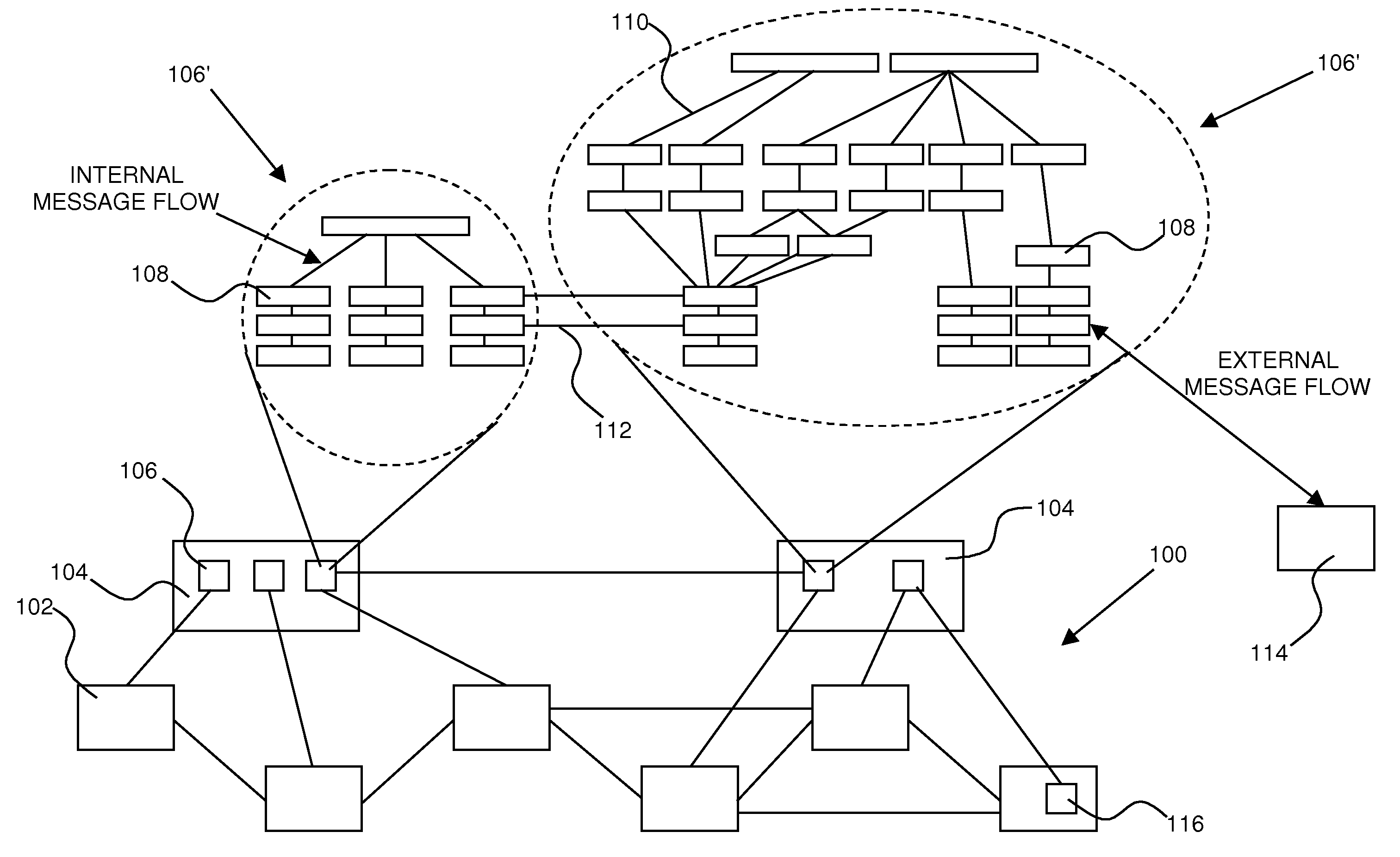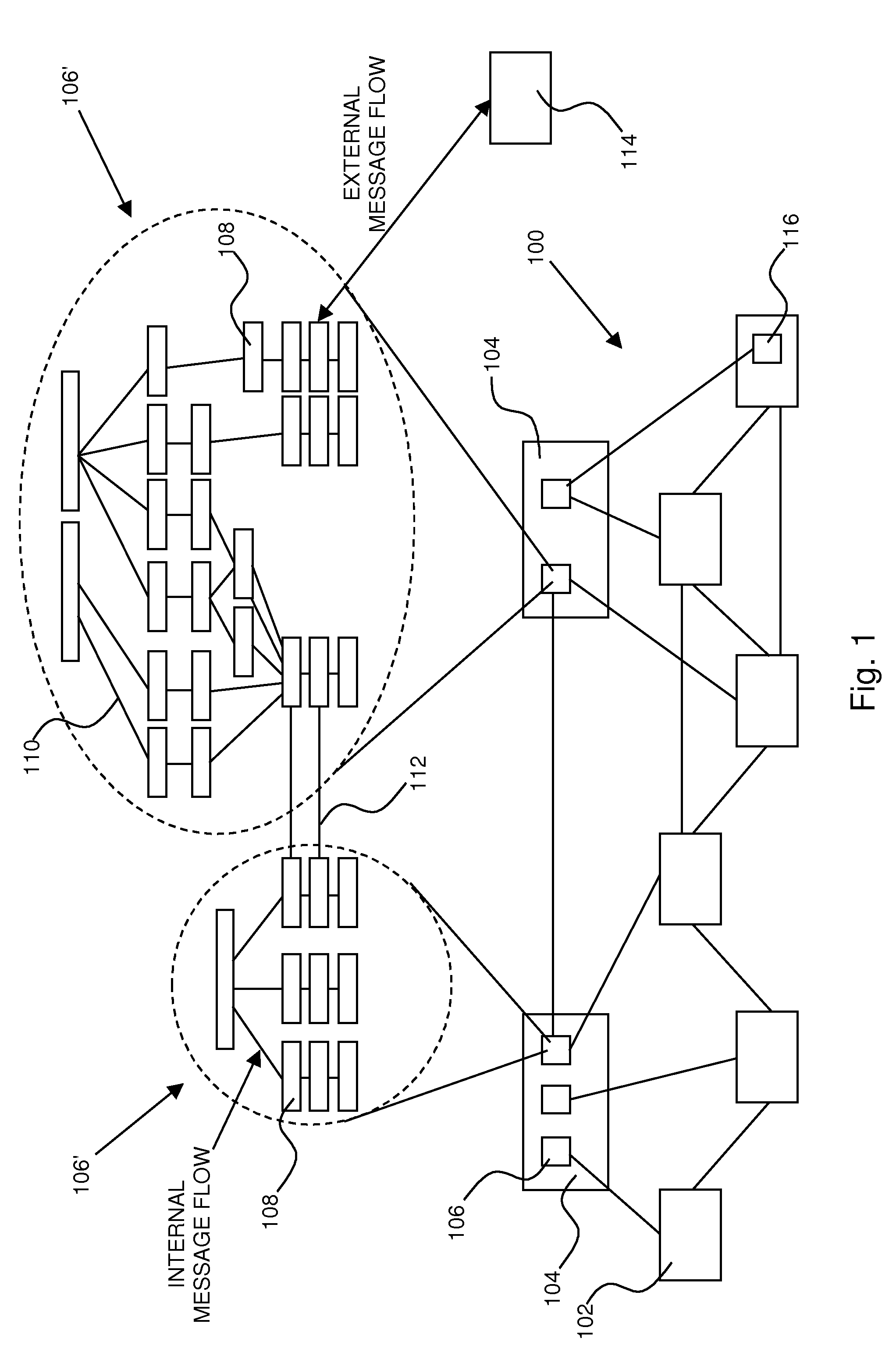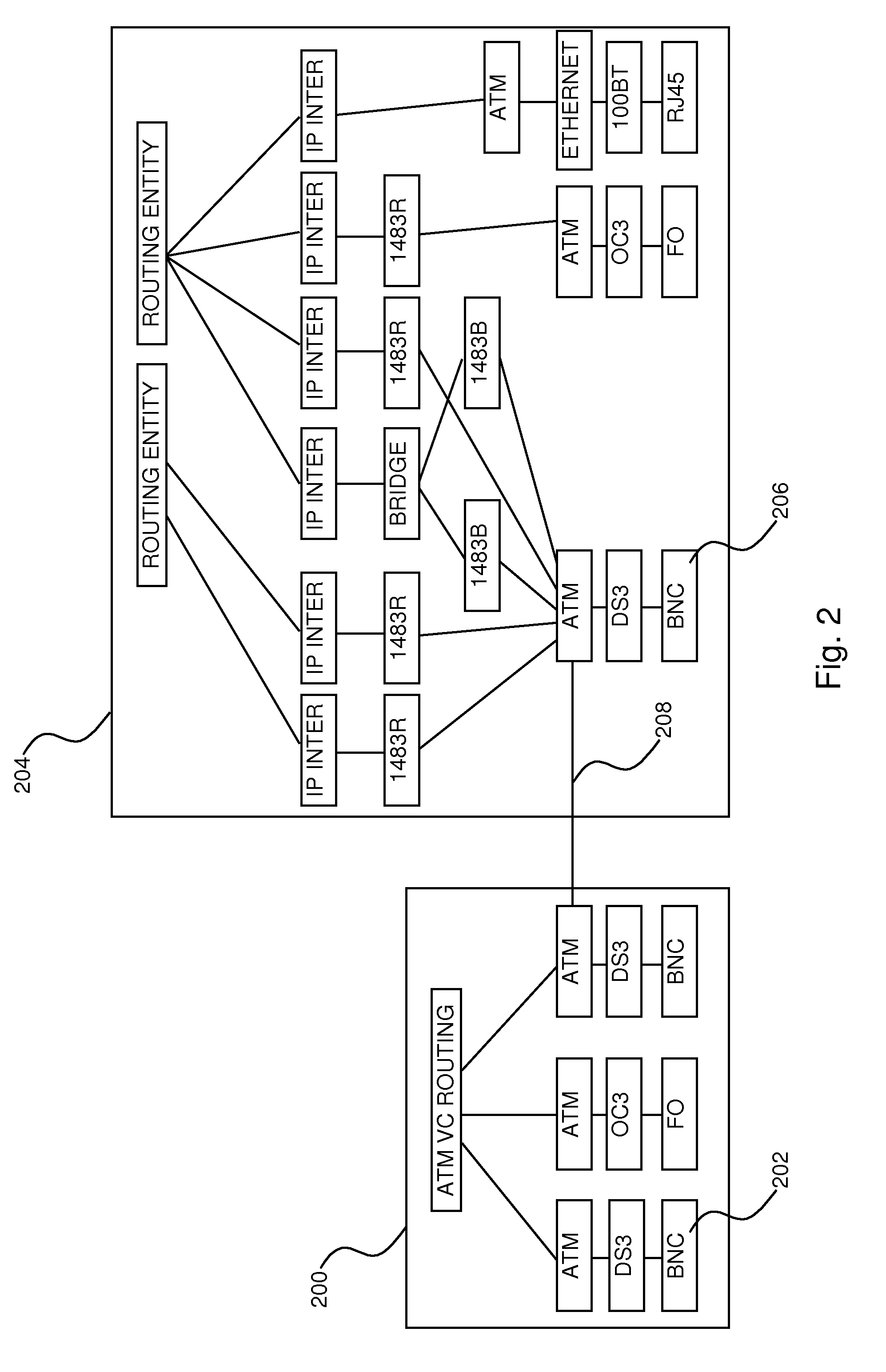Large-scale network management using distributed autonomous agents
a distributed autonomous agent and network management technology, applied in the field of computer network management, can solve the problems of clear integration cross-domain, poor response time, and exhaustion of computation resources, and achieve the effect of easy addition and monitoring
- Summary
- Abstract
- Description
- Claims
- Application Information
AI Technical Summary
Benefits of technology
Problems solved by technology
Method used
Image
Examples
Embodiment Construction
[0039]Reference is now made to FIG. 1 which is a simplified conceptual illustration of a large-scale network management system using distributed autonomous agents, constructed and operative in accordance with a preferred embodiment of the present invention. In the system of FIG. 1 a network, generally designated 100, comprises a plurality of network elements 102, and is managed by one or more decentralized network management units 104, where each network management unit 104 sees and is responsible for only a portion of the overall network 100. A proxy or hardware embedded “agent”106 is defined for each network element 102, with each decentralized network management unit 104 hosting those agents 106 that correspond to the portion of the network 100 for which the network management unit 104 is responsible. (Various agents 106 are shown in expanded views in dashed lines indicated by reference numerals 106′.)
[0040]Each agent 106 in turn comprises a plurality of device components (DCs) 1...
PUM
 Login to View More
Login to View More Abstract
Description
Claims
Application Information
 Login to View More
Login to View More - R&D
- Intellectual Property
- Life Sciences
- Materials
- Tech Scout
- Unparalleled Data Quality
- Higher Quality Content
- 60% Fewer Hallucinations
Browse by: Latest US Patents, China's latest patents, Technical Efficacy Thesaurus, Application Domain, Technology Topic, Popular Technical Reports.
© 2025 PatSnap. All rights reserved.Legal|Privacy policy|Modern Slavery Act Transparency Statement|Sitemap|About US| Contact US: help@patsnap.com



